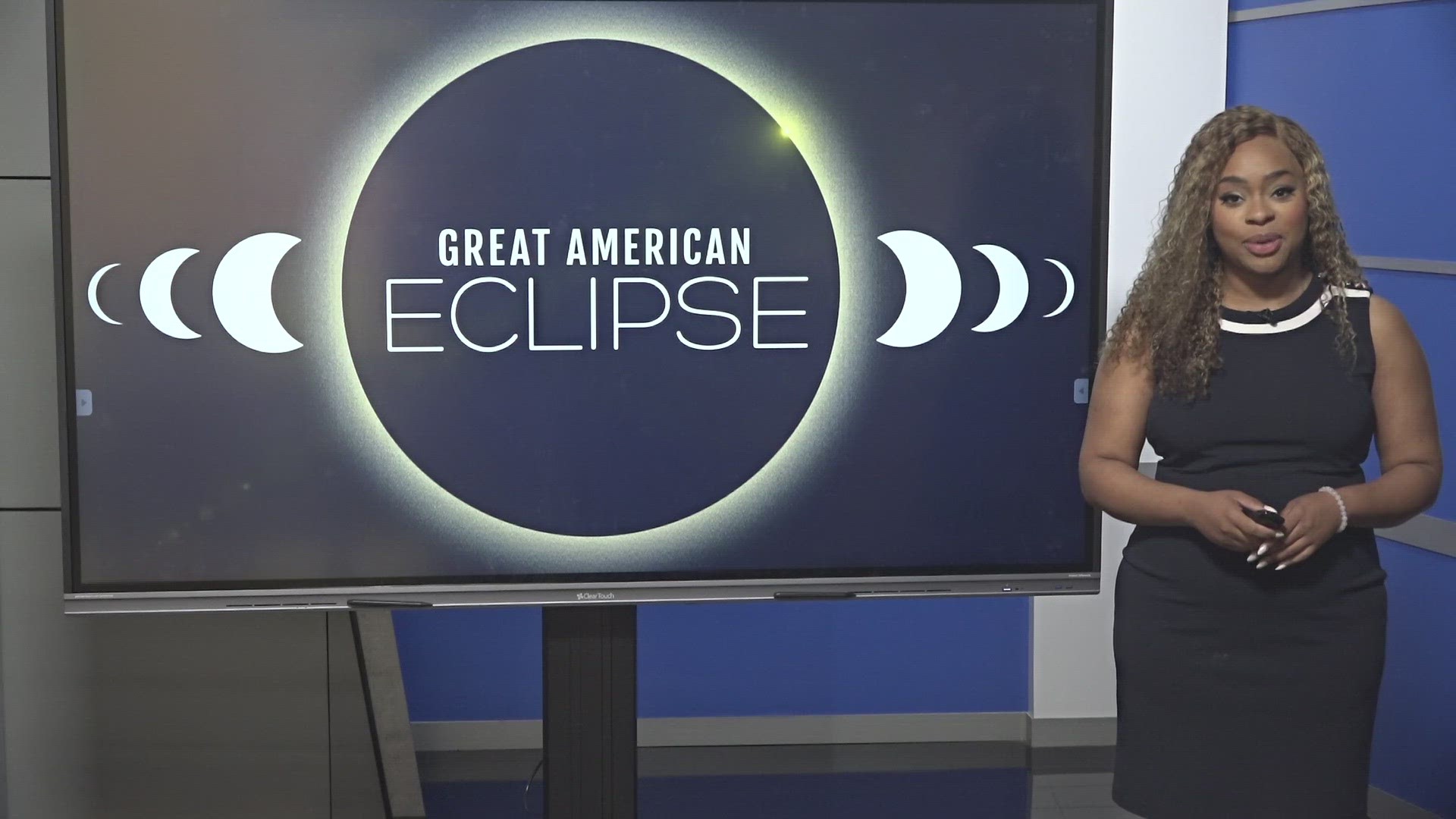GREENSBORO, N.C. — Have you grabbed your solar glasses yet?
You'll definitely need them if you plan to take part in looking at the 2024 Total Solar Eclipse.
WFMY News 2 recently spoke with Guilford Technical Community College Astronomer Tom English.
English studies everything about the natural world which includes our planet as well as other planets-- plus the stars and celestial bodies in outer space.
How does he do it? he uses a very large telescope to see faraway objects.
You've heard the saying the stars must align. That is the perfect way to describe the Total Solar Eclipse.
"A solar eclipse like this happens every new moon which is practically every month I mean the lunar cycle is about a month long but things have to align just right for an eclipse so we have to be in align so sun, moon, and Earth but we also have to be on the same level so that everything can line up so the shadows can land," Tom English said.
What time does the Solar Eclipse start?
According to GTCC, The eclipse begins at 1:56 p.m. in Jamestown. Mid-eclipse is at 3:14 p.m., when the moon will cover 81% of the sun’s face. The moon slips off the face of the sun at 4:28 p.m.
Observers in the path of totality won’t experience total darkness, but the sky near the sun will turn significantly dark and bright stars and planets will be visible – at the same time, along the horizon in all directions there will be twilight conditions.
"The way the eclipse works you either are in the right place or you're not. So the U.S. the line of totality runs from Texas all the way up to Maine if you are along there the moon will block the sun and during those few minutes the sky above you will be very dark you'll see stars but all around you it will be a twilight," English said.
For this eclipse, the path of totality enters the United States in Texas, passes through parts of Oklahoma, Arkansas, Missouri, Tennessee, Illinois, Kentucky, Indiana, Ohio, Pennsylvania, New York, Vermont, New Hampshire, and Maine.
How long is the Solar Eclipse?
Professor English says for most places along the totality line the eclipse will last three to four minutes.
Since the path is relatively narrow, looking into the distance along the horizon reveals where the sun is still “out” and brighter daylight is visible.
How do you view the Solar Eclipse?
Safety is the number one priority when viewing a total solar eclipse. According to Nasa.gov, viewing any part of the bright Sun through a camera lens, binoculars, or a telescope without a special-purpose solar filter secured over the front of the optics will instantly cause severe eye injury.
How to view the Eclipse without solar glasses?
If you plan to watch the solar eclipse, make sure you are wearing solar glasses or a safe handheld solar viewer at all times. You can also use an indirect viewing method, such as a pinhole projector.
"Don't try to come up with homemade solutions for looking at the sun because if you make a filter that looks like it is dark enough. It can let some infrared through and that can still damage your eyesight," English said.

